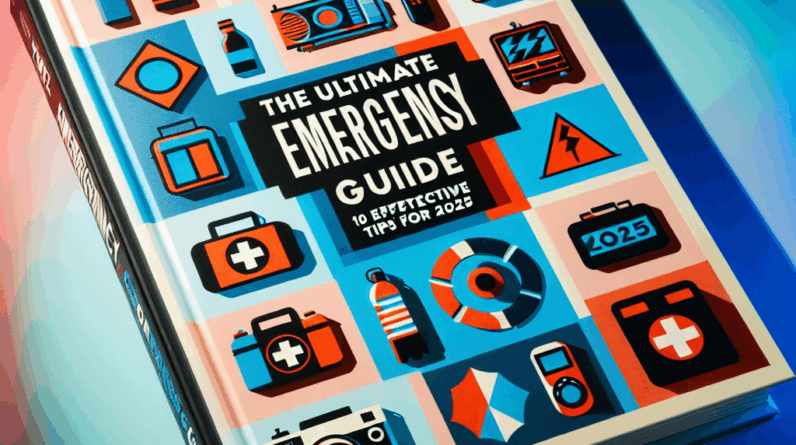
As we face the uncertainties of the future, having a solid emergency food storage plan is more crucial than ever. This guide aims to provide you with the best practices and insights to ensure your food supply remains robust and nutritious through 2025 and beyond. Here’s everything you need to know to build a reliable emergency food storage system that meets your specific needs.
Introduction to Emergency Food Storage
Emergency food storage involves accumulating non-perishable food items to secure your food needs during unexpected crises such as natural disasters or economic downturns. As 2025 approaches, the importance of a dependable emergency food supply cannot be overstated. Experts in preparedness stress the significance of having a diverse stockpile that not only includes basic staples like beans and rice but also caters to the dietary requirements of all family members. This guide offers tailored advice and strategic tips to help you set up a sustainable emergency food storage system that maintains nutritional value over time.
Understanding Your Emergency Food Storage Needs
Before setting up your emergency food storage, it’s crucial to consider the dietary preferences and needs of your family. This includes accounting for allergies, special diets, and even pet food. Gathering this information will help you customize your emergency food supply effectively. For instance, families with infants will need to include baby formula, while seniors might require softer foods. As we move towards 2025, it’s advisable to diversify your food storage with options like freeze-dried fruits and fortified foods to ensure adequate nutrition. Start by creating a detailed inventory of necessary items, prioritizing them based on shelf life and preparation ease.
Additionally, you should determine the desired duration of your food storage—whether it’s for a few days or up to a year. Factors like recent climate and economic changes might influence you to aim for a longer-term solution. Calculate the needed quantities based on your household size and consumption rates, and consider bulk purchasing to economize and guarantee ample supplies.
Choosing the Best Long-Term Food Storage Options
For 2025, optimal choices for long-term food storage include dried grains, beans, freeze-dried meals, and canned goods, known for their longevity and ease of preparation. Items such as rice and oats can last over 20 years if stored correctly, while freeze-dried produce can retain flavor and nutrients for decades. Canned meats and ready meals provide convenience during an emergency.
Innovations in packaging technologies such as oxygen absorbers and vacuum-sealed pouches have significantly extended the shelf lives of stored foods by minimizing exposure to harmful elements. Also, eco-friendly packaging options are emerging, appealing to environmentally conscious preppers. Invest in high-quality, airtight containers to keep your food safe and fresh for extended periods.
Proper Food Rotation Practices
Implementing a first-in, first-out (FIFO) system is essential for keeping your food supply fresh and safe. Label your items with purchase and expiration dates and regularly rotate your stock to prevent any from expiring unnoticed. Setting reminders or using spreadsheets can help you keep track of your inventory.
Routine checks and updates to your stockpile are crucial. Quarterly reviews allow you to replace expired items and adjust your stock based on changing needs or preferences. Digital tools and apps can also assist in managing your emergency food storage effectively.
Storage Containers and Packaging
Selecting the right storage solutions is vital for effective emergency food storage. Options include food-grade plastic buckets, glass jars, Mylar bags, and vacuum-sealed pouches. Mylar bags with oxygen absorbers are particularly useful for long-term storage as they provide excellent protection against air and humidity. It’s also important to organize your storage space efficiently, using clear labels and shelves to make items easy to find and rotate.
Maintaining Food Quality Over Time
Maintaining optimal storage conditions—cool, dry, and dark—is crucial for preserving the quality and longevity of your stored food. Temperature should ideally be between 50-70°F (10-21°C). Use desiccants and dehumidifiers if needed to control moisture and prevent mold or pests. Regular checks can help you address any issues promptly.
Handling food safely is also important; always use clean hands and tools to avoid contamination. Keep informed about any recalls or safety advisories that might affect your stored items.
Conclusion
As we look towards 2025, it’s clear that a well-planned emergency food storage is a key element of preparedness. By understanding your needs, choosing the right foods, and maintaining your supplies, you can ensure your family remains well-fed and resilient in any situation. Start prioritizing your emergency food storage today to be well-prepared for the future.
Frequently Asked Questions
1. What is the most important aspect of emergency food storage?
The most crucial element is to ensure a variety of nutritionally balanced foods that are stored properly and rotated regularly to maximize shelf life.
2. How long can emergency food storage last?
Emergency food can last from 5 to over 30 years, depending on the type of food and storage conditions. Foods like freeze-dried items and grains generally have the longest shelf lives.
3. What are the best foods to store for emergencies in 2025?
Recommended staples include rice, beans, oats, canned meats, and freeze-dried fruits and vegetables, due to their longevity, nutritional content, and ease of preparation.
4. How often should I rotate my emergency food supplies?
It’s advisable to inspect and rotate your supplies at least quarterly, using the FIFO method to keep your stock fresh and safe.
5. Why is emergency food storage important for 2025?
With increasing environmental and economic uncertainties, having a reliable emergency food storage provides peace of mind, enhances resilience, and ensures the well-being of your loved ones during crises.




